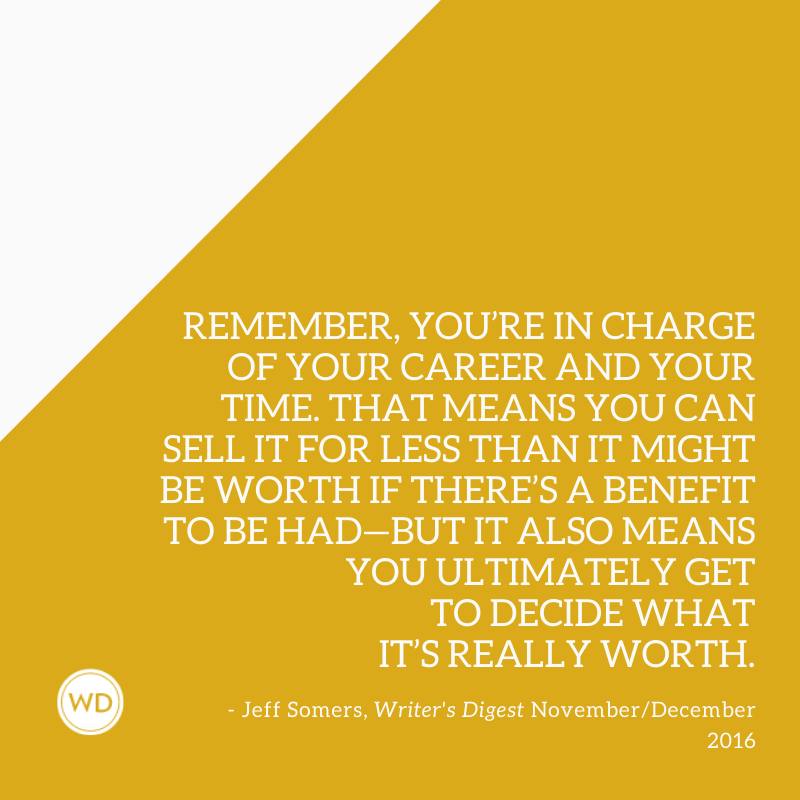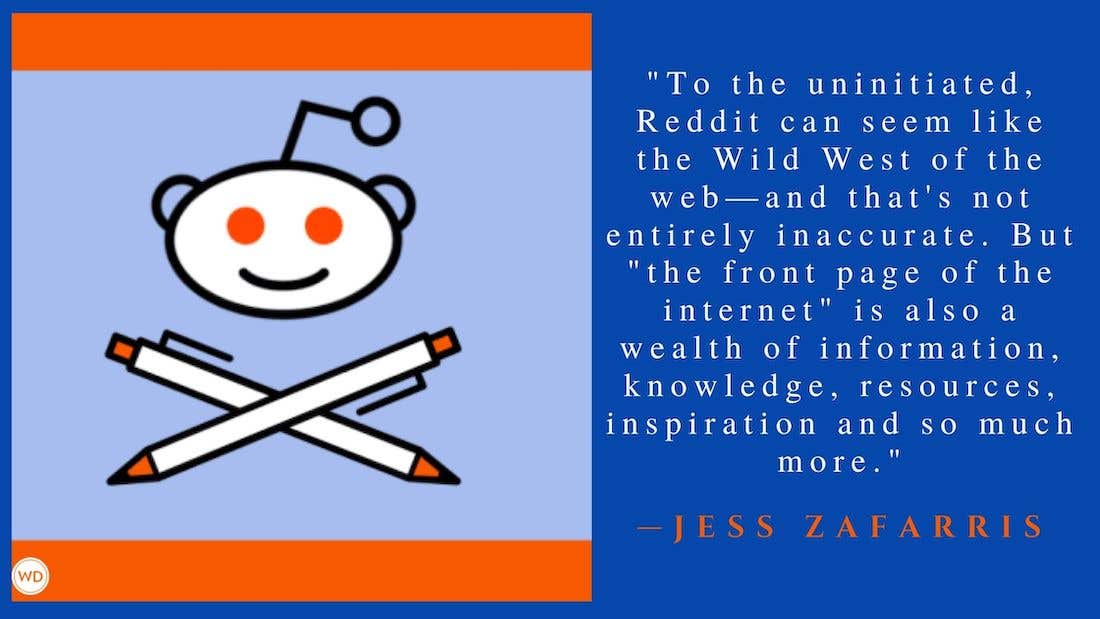How to Get Into Magazines: Write What Editors Want (But Don’t Want to Write Themselves)
Editor and writer David Fryxell shares a valuable piece of advice with anyone trying to break into the magazine or newspaper market “Learn to write the stories that editors dread.”
When I was editor of a city magazine, I knew that our best-selling issue each year would be the annual "Best of" roundup. You know what I mean: The magazine picks the best pizza in town, the best specialty shops, the best places to play squash or spot celebrities. For most city magazines, it's the signature feature each year.
So it might surprise you to know that finding a writer for this prestigious, high-profile assignment was a headache. When "Best of" season rolled around, staff writers would start to avoid me, or they pretended to be on the phone when I'd pop into their cubicles. I'd wind up "dumping" the story on whichever staffer was lowest on the totem pole.
See, the veteran writers were jaded. They wanted to tackle 5,000-word investigative pieces that would win journalism awards and pad their portfolios. They had already paid their dues in the "Best of" trenches, tasting chili dogs and comparing kite stores.
As a magazine editor and as a writer, I want to give you a piece of advice, something everyone who has ever been behind an editor's desk wants you to know: Learn to write the stories that editors dread.
Learning to write the stories editors (and their established writers) dread is part of learning to target your pitches. Just as you should not try to break into a market with a complex proposal try a simple, front-of-the-book short instead you should not start out competing with a magazine's regular writers for the top-flight assignments. Find the stories nobody else wants to do, and offer to write them. Editors will love you. (So will the regular writers, at least until you begin edging them out for those top-flight assignments!)
Sort through the racks
How do you find the stories nobody else wants to do? Start with those perennials. While a city magazine editor might not entrust a new freelancer with the whole "Best of" project, you might get a try on a particularly onerous part of this package testing drycleaners to find the best stain-busting spot in town, say, or tromping to miniature golf courses to pick the best putt-putt place. Look at back issues to find ideas that haven't been tried in several years, or put a fresh spin on an old gimmick. (Not too fresh a spin remember that one reason editors dread these stories is because they're formulaic. If last year the magazine rated the city's best margaritas, maybe this is the year for frozen daiquiris.)
Many magazines have more than one such regular burden. Mine also rated the best doctors and the best lawyers, each roughly every other year. When such projects make the staff sigh, "Been there, done that," it's opportunity knocking for you.
Synchronize your efforts
The calendar can also be your friend in finding stories editors dread. Writing a Halloween haunted-house feature, a heartwarming Christmas yarn or a guide to things Irish for St. Patrick's Day might sound like a fun, easy assignment, and it can be the first few times. But imagine covering these holidays every year, and you can see why coming up with another clever take on Easter eggs is the last thing most editors look forward to each spring. (Don't forget that if you're pitching most magazines, "spring" comes sometime the previous fall. Figure six-month lead times between query and publication with seasonal ideas. One month is plenty, however, for most newspapers and weeklies, whose harried editors rarely find time to look beyond the next edition.)
As a newspaper features editor, for example, I struggled to find writers (and story ideas) for such annual musts as the state fair, the winter carnival and the Fourth of July food fest. Want to rate the midway rides, interview the carnival barkers or taste-test the gloriously greasy food come fair time? Great because the staff writers are sick of it. Itching to interview the homecoming queen, go behind the scenes at "The Nutcracker" or pick the best pumpkin patch? Go ahead, make your editor's day.
Another good test for stories editors dread is how much legwork a story takes versus the glamour associated with it. The more work and less glitz, the harder it will be to assign the story.
It's not hard to find writers of personal essays, humorous columns, op-ed pieces or other stories that take little or no legwork. Heck, if editors weren't so busy with editing, they would write those stories themselves. But the pieces requiring a high ratio of research to words on paper regularly go begging. Stories that demand a lot of phone calls or driving around town, listings of any kind or features packed with facts (phone numbers, dates, addresses, prices) are stories that scream "headache!" to editors.
These may be regular departments in a magazine, standing features in a weekly paper or routine news stories. With a little study of your market, you can anticipate these needs: Offer to cover the rural school board, write the new-products column or assemble the calendar of events. These tasks can be terrific training, and even fun, but for burned-out veterans, they're sheer drudgery. For their editors, they're the object of dread.
Plain-label to brand-name
That same glamour-shunning strategy can work for more exciting stories on subjects editors nonetheless dread. When I edited a university alumni magazine, I dreaded the obligatory donor profiles. The subjects didn't interest me the way groundbreaking faculty researchers did. We were doing the stories only because the subjects were rich and either had given money or soon might.
Still, these were profiles and in the hands of an enthusiastic writer, they could be fascinating stories. The subjects were rich and successful, which is a pretty good start for an interesting story. The stories just weren't as interesting as the rest of the magazine, so I dreaded trying to assign them.
Or consider music or theater reviews. Many writers long to try their hand at being a critic, and such pieces can offer creative legroom. Just don't start out aiming at the most glamorous assignments. If a bound-for-Broadway show and a production of a semi-professional local company open the same night, which one will give the editor a headache? If U2 and a band one gig up from the garage are both playing, go for the garage banded and become the editor's friend.
Why go after stories editors dread? It's like Willie Sutton's reported explanation of why he robbed banks because that's where the money is. Identify the assignments editors can't give away because that's where the need is. After you have hundreds of clips and you've "been there, done that," you can be jaded and play hard to get.
Learn how to develop article ideas magazine editors will find irresistible by considering:
Writer's Digest Handbook Of Magazine Article Writing
Become a WD VIP and Save 10% on this book:
Get a 1-year pass to WritersMarket.com, a 1-year subscription to Writer's Digest magazine and 10% off all WritersDigestShop.com orders! Click here to join.
Also check out these items from the Writer's Digest's collection:
Starting Your Career As A Freelance Writer
Freelance Basics - OnDemand Webinar
The Wealthy Writer
Writer's Digest The Craft & Business Of Writing
Writer's Digest Guide To Query Letters
Writer's Digest No More Rejections
Writer's Digest Weekly Planner
Writer's Digest Magazine One-Year Subscription
Writer's Digest Breaking Into Corporate Writing - On-Demand Webinar








